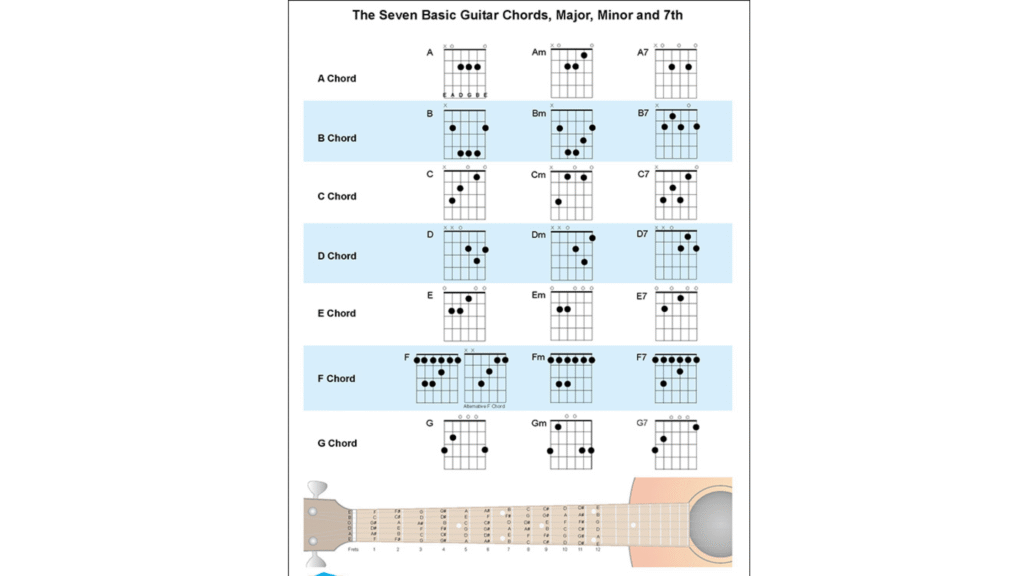If you’ve ever wondered why some songs sound happy and bright, while others feel sad or emotional, the answer lies in chords. Chords are the backbone of music, and the two most important types are Major and Minor. In this ultimate handbook, we’ll break down what chords are, how major and minor differ, and why mastering them is essential for every musician – whether you play guitar, piano, or any other instrument.

What Are Chords in Music?
A chord is a group of notes played together to create harmony. Instead of playing a single note, you play two or more notes at the same time, and that’s what gives songs their richness and depth.
- Major Chords → Bright, joyful, uplifting
- Minor Chords → Emotional, sad, dramatic
These two chord families form the foundation of all modern music.

Major Chords – The Happy Sound
A Major chord is built using three notes:
- Root note (the main note)
- Major third
- Perfect fifth
Example: C Major (C – E – G)
When you play a major chord, it feels positive and energetic. That’s why you hear them in pop, rock, and dance music.
Common Major Chords You Must Know:
- A Major
- C Major
- D Major
- E Major
- G Major
Minor Chords – The Emotional Sound
A Minor chord has a slightly different formula:
- Root note
- Minor third
- Perfect fifth
Example: A Minor (A – C – E)
The minor chord creates a mood that is sad, deep, or dramatic. That’s why it’s often used in ballads, slow rock, and emotional music pieces.
Common Minor Chords You Must Know:
- A Minor
- D Minor
- E Minor
- G Minor
- B Minor
Major vs Minor – The Difference in Feel
- Major = Happy, bright, uplifting
- Minor = Sad, emotional, dramatic
Example:
- C Major sounds joyful.
- C Minor sounds melancholic.
This simple shift from major to minor can completely change the mood of a song.
Final Thoughts
Mastering major and minor chords is like learning the ABCs of music. Once you understand them, you can play thousands of songs, switch emotions in your music, and even start composing your own pieces.

